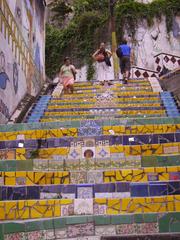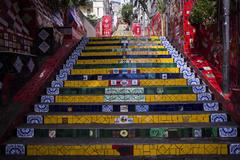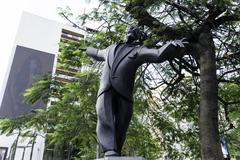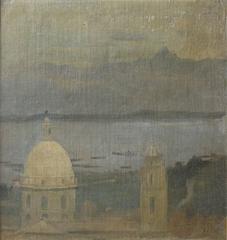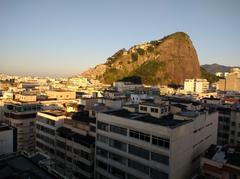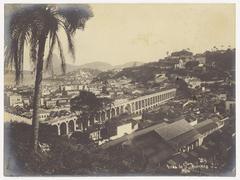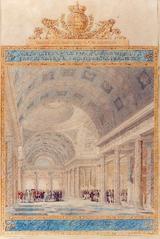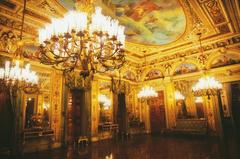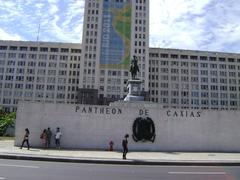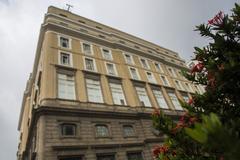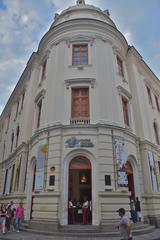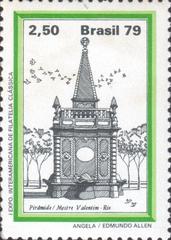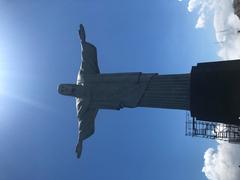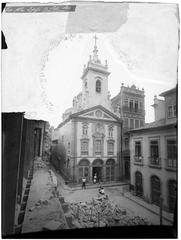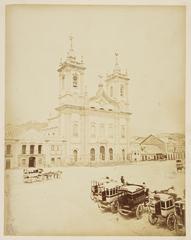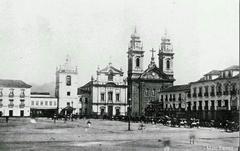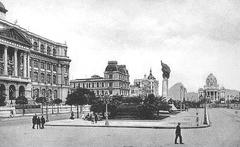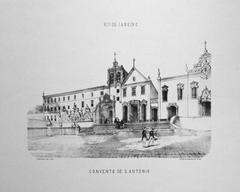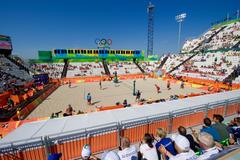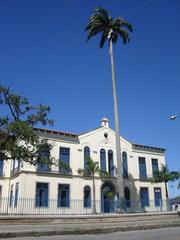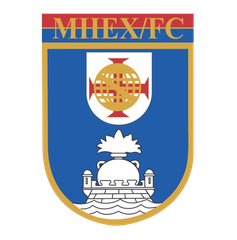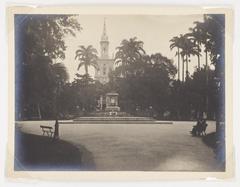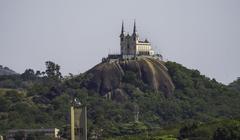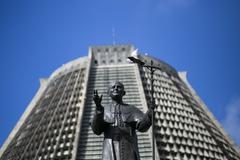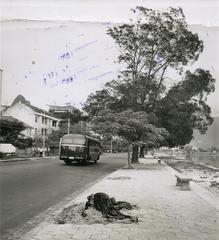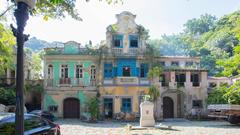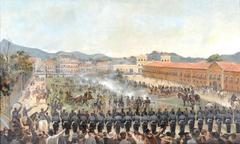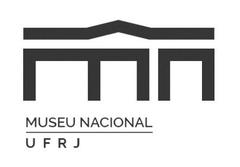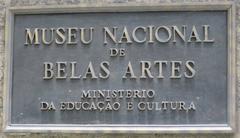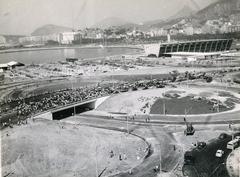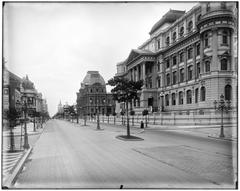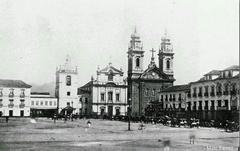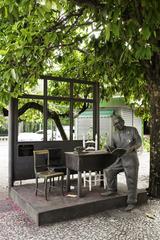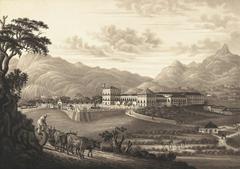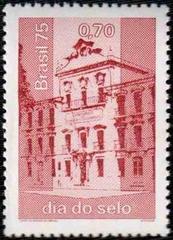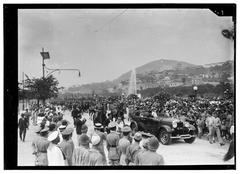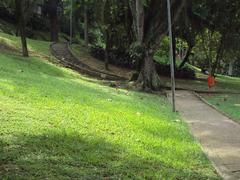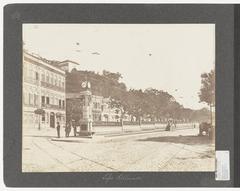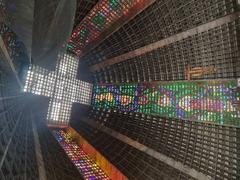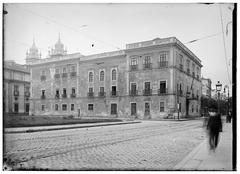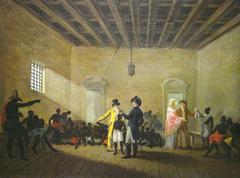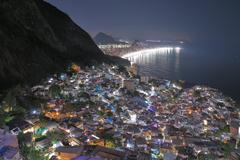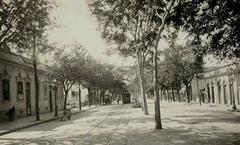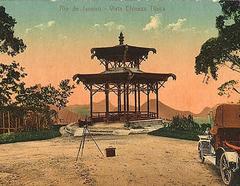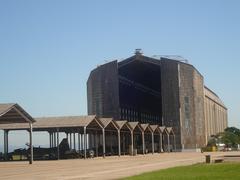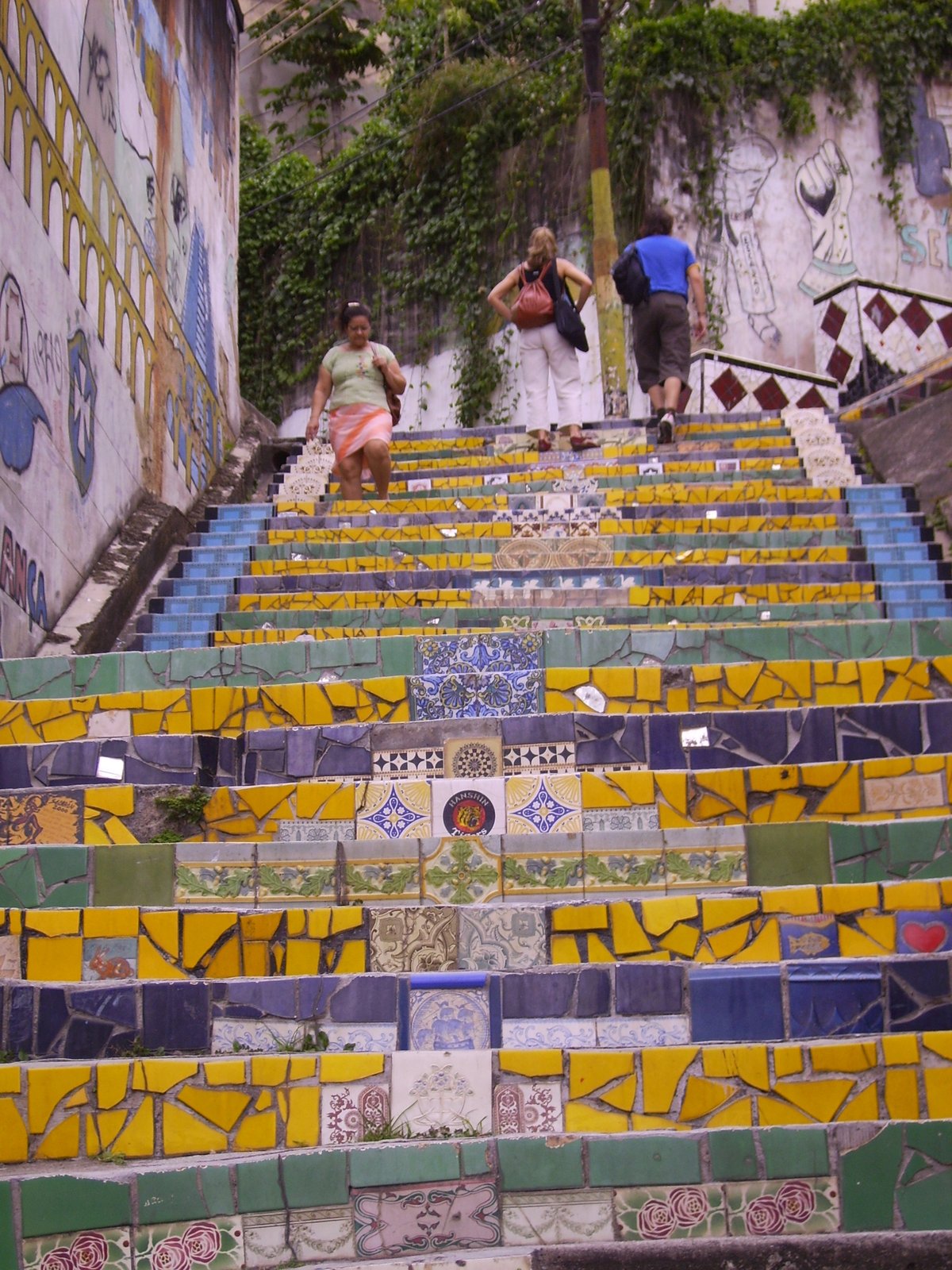
Visiting Escadaria Selarón: Hours, Tickets, and Historical Sites in Rio de Janeiro
Date: 16/07/2024
Introduction
Escadaria Selarón, also known as the Selarón Steps, is a vibrant mosaic staircase that has become one of the most iconic landmarks in Rio de Janeiro, Brazil. Nestled between the neighborhoods of Lapa and Santa Teresa, the steps are the brainchild of Chilean-born artist Jorge Selarón, who began transforming the once-dilapidated staircase into a colorful masterpiece in 1990. Over the course of more than two decades, Selarón adorned the 215 steps with over 2,000 tiles from more than 60 countries, creating a living, evolving piece of art that celebrates cultural diversity and artistic expression (Atlas Obscura). Today, Escadaria Selarón attracts visitors from around the world, drawn by its rich history, cultural significance, and the artist’s enduring legacy. This guide provides a comprehensive overview of everything you need to know for a memorable visit, including the history of the steps, practical visitor information, travel tips, and nearby attractions.
Table of Contents
- Introduction
- History of Escadaria Selarón
- Visitor Information
- Travel Tips and Nearby Attractions
- Accessibility
- Conclusion
- FAQ
History of Escadaria Selarón
Origins and Early Development
Escadaria Selarón was originally constructed in the early 20th century as a simple, functional staircase connecting the neighborhoods of Lapa and Santa Teresa. However, it wasn’t until the early 1990s that the steps began to transform into the iconic mosaic masterpiece they are today.
Jorge Selarón - The Visionary Artist
The transformation of the steps is credited to Jorge Selarón, a Chilean-born artist who moved to Rio de Janeiro in the 1980s. Selarón began renovating the dilapidated steps in 1990 as a tribute to the Brazilian people. Initially, he funded the project with his own money, selling his paintings to cover the costs. Over time, the project grew in scale and ambition, with Selarón dedicating over 20 years of his life to the continuous embellishment of the steps.
Artistic Evolution
Selarón’s vision for the steps was to create a living, evolving piece of art. He began by covering the 215 steps with vibrant tiles, ceramics, and mirrors, many of which were sourced from various parts of the world. The artist’s unique style and dedication attracted international attention, and visitors from around the globe began contributing tiles to the project. Today, the steps feature over 2,000 tiles from more than 60 countries, making it a truly global mosaic.
Cultural Significance
The Selarón Steps have become a symbol of Rio de Janeiro’s cultural diversity and artistic spirit. The steps are not only a popular tourist attraction but also a testament to the power of individual creativity and community collaboration. Selarón’s work has been celebrated in various media, including music videos, films, and television shows, further cementing its place in popular culture.
Recognition and Legacy
Jorge Selarón’s dedication to the steps earned him widespread recognition and numerous accolades. In 2005, the steps were officially recognized as a city landmark by the Rio de Janeiro municipal government. Selarón continued to work on the steps until his untimely death in 2013. His legacy lives on through the continued maintenance and preservation of the steps by local artists and volunteers.
Impact on Local Community
The Selarón Steps have had a significant impact on the local community, both economically and socially. The influx of tourists has brought increased business to local shops, restaurants, and hotels, contributing to the economic vitality of the Lapa and Santa Teresa neighborhoods. Additionally, the steps have become a source of pride for residents, symbolizing the resilience and creativity of the community.
Preservation Efforts
Preserving the Selarón Steps is an ongoing effort that involves both local authorities and community members. The steps are regularly maintained to ensure their structural integrity and aesthetic appeal. Efforts are also made to protect the steps from vandalism and damage, ensuring that Selarón’s vision continues to inspire future generations (UNESCO).
Visitor Information
Tickets and Visiting Hours
Visiting Escadaria Selarón is free, and the steps are open to the public 24/7. However, the best time to visit is during daylight hours to fully appreciate the vibrant colors and intricate details of the tiles.
Guided Tours
Several guided tours include Escadaria Selarón as part of their itinerary, offering historical context and interesting anecdotes about the artist and the steps. These tours can enhance your visiting experience by providing deeper insights into the cultural significance of the landmark.
Travel Tips and Nearby Attractions
How to Get There
Escadaria Selarón is easily accessible by public transportation. The nearest metro station is Cinelândia, from which you can either walk or take a short taxi ride to the steps.
Nearby Attractions
While visiting the Selarón Steps, consider exploring other nearby attractions such as the historic Santa Teresa neighborhood, the vibrant nightlife of Lapa, and the iconic Arcos da Lapa. Each of these locations offers a unique glimpse into the cultural and historical richness of Rio de Janeiro.
Travel Tips
- Safety - While the area is generally safe during the day, it’s advisable to visit with a group and avoid late-night visits.
- Weather - Rio de Janeiro can be hot and humid, so dress comfortably and stay hydrated.
- Photography - The steps are a popular spot for photography, so bring your camera to capture the vibrant mosaics.
Accessibility
The steps may present challenges for individuals with mobility issues. While there are no specific accommodations in place, the base of the steps is accessible, and visitors can still appreciate the artwork from there.
Conclusion
The history of Escadaria Selarón is a testament to the transformative power of art and the enduring legacy of Jorge Selarón. From its humble beginnings as a functional staircase to its current status as a global cultural landmark, the Selarón Steps continue to captivate and inspire visitors from around the world. The steps stand as a vibrant symbol of Rio de Janeiro’s artistic spirit and the universal language of creativity.
FAQ
- Q - Are there any entrance fees to visit Escadaria Selarón?
- A - No, visiting the steps is free of charge.
- Q - What are the best times to visit?
- A - The best times to visit are during daylight hours to fully appreciate the vibrant mosaics.
- Q - Are the steps accessible for people with disabilities?
- A - The steps themselves may be challenging, but the base of the steps is accessible.
Call to Action
For more travel tips and updates, download our mobile app Audiala, check out our other related posts, or follow us on social media.
References
- BBC News. (2013). Jorge Selarón and his famous steps in Rio.
- Atlas Obscura. (n.d.). Escadaria Selarón.
- UNESCO World Heritage Centre. (n.d.). Escadaria Selarón.
- Rio Times. (n.d.). Jorge Selarón and his famous steps in Rio.
